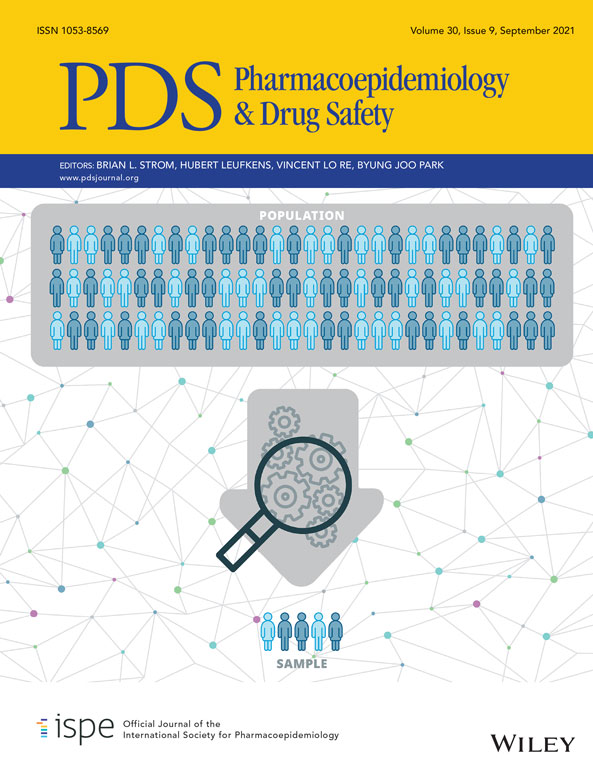Use of negative controls in a prescription sequence symmetry analysis to reduce time-varying bias
Abstract
Purpose
There is an increased use in the (prescription) sequence symmetry analysis (PSSA); however, limited studies have incorporated a negative control, and no study has formally quantified and controlled for within-patient time-varying bias using a negative control. Our aim was to develop a process to incorporate the effect of negative controls into the main analysis of a PSSA.
Methods
Using a previously assessed dihydropyridine calcium channel blocker (DH-CCB) and loop diuretic PSSA, we directly compared the adjusted sequence ratios (aSRs) of DH-CCBs to each of the two negative control index drugs (levothyroxine and angiotensin converting enzyme [ACE] inhibitor/angiotensin-2 receptor blocker [ARB]) using the ratio of the aSRs to estimate a relative aSR with a Z test. Further, we utilized the relative aSR in stratum-specific analyses and varying exposure windows.
Results
The relative aSR of DH-CCBs decreased from 1.87 to 1.72 (95% CI 1.66–1.78) using levothyroxine as a negative control index drug. ACE inhibitor/ARB negative control index drug resulted in an aSR of 1.27 thus reducing the relative aSR for DH-CBB from 1.84 to 1.45 (95% CI 1.41–1.49). When restricting the exposure window to 180 and 90 days, the relative aSR of DH-CCBs increased to 1.68 (95% CI 1.62–1.74) and 1.86 (95% CI 1.78–1.94), respectively, relative to the ACE inhibitor/ARB negative control index drug.
Conclusion
We illustrated how to incorporate negative control index drugs into a PSSA and generate relative aSRs. Stratum-specific assessments and varying the exposure windows while using negative control index drugs can yield more informative results.
CONFLICT OF INTEREST
The authors declare no conflict of interest.




